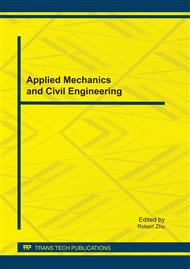p.175
p.181
p.186
p.192
p.198
p.205
p.210
p.215
p.221
3-D FEM Seepage Simulation of Channel with Drain Pipes
Abstract:
In order to simulate the seepage field with drain pipes, the air element method is used in this paper. In this method, the pipe elements are regarded as a kind of material with high permeability coefficient and an equivalent hydraulic conductivity is assigned to them. Thus these pipe elements can be included in the conventional seepage calculation as other common elements. Moreover, the difficulty of giving water head boundary to the inner surface of pipes directly is avoided. According to the seepage calculation of the channel with large number of drain pipes in Huangyou part of the middle line in South-to-North water transfer project, the results show that, with drainage-piping, the pore water pressure in channel foundation is reduced significantly.
Info:
Periodical:
Pages:
198-204
Citation:
Online since:
October 2011
Authors:
Keywords:
Price:
Сopyright:
© 2012 Trans Tech Publications Ltd. All Rights Reserved
Share:
Citation:


